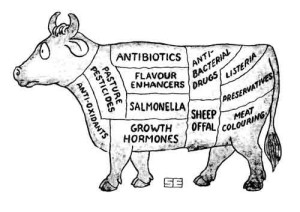With the presidential race in full swing, a controversial topic that has been on the horizon for years back is Planned Parenthood and the argument of the government funding this organization. Now most of the republican party is against Planned Parenthood, whether it’s because they don’t want to support an organization that provides abortion because of their faith or morals, or just don’t find it important enough to spend money on. Texas was the first state to defund Planned Parenthood but not soon after, Alabama, Arkansas, Kansas, Louisiana, and North Carolina followed behind as well as Utah, Wisconsin and Ohio.

No matter what age or how much money you have you should be able to make informed, independent decisions about health, sex and family planning. Taking that away from anyone is violating their constitutional rights. The states that do provide funding provide the organization with 500 million dollars each year.
What many don’t realize, is this money goes to only 3% of the service that this whole political debate is about; abortions. The money used for abortions comes from private’s donors as well as fees, which isn’t the only service Planned Parenthood provides. These pro-life, anti-planned parenthood supporters need to realize what they are trying to stop. All they seem to be focusing on protecting is the life of fetus rather than the life of a living, walking, breathing grown woman. The organization really is putting 9% of this government funded money to cancer screening and prevention, 42% goes to STD testing and treatment as well as 34% to contraception. Many of these services young and underprivileged depend Planned Parenthood to be provided with these extremely important services.

Although Planned Parenthood receives money from private donors, it still needs government funding, which makes up for 41% of its revenue, the largest source of money they receive. That is a tremendous amount to take away from an organization. Many planned parenthoods go out of business because they cannot maintain to upkeep the clinics, raising prices for patients, turning hundreds of women away.
According to Texas’s Policy Evaluation project, which is working to track reproduction health outcomes in Texas, there were dramatic results since Texas was the first to defund Planned Parenthood in 2011. There was a 35% drop in claims for birth control implants and pills because many couldn’t afford it anymore. This then created an increase in births by 27%, Showing disadvantaged woman were struggling to get the contraceptive care they really need. Many politicians claim they are putting this money instead towards to health care providers and give lists of other possible places to visit. Indiana even offered a woman’s prison as an alternative…But just from looking at the results in Texas it clearly isn’t true. These health care providers, are out of reach from the impoverished communities that need it the most.
Planned Parenthood is extremely beneficial for young girls as well. Because of the unrealistic and ineffective “Chasity education programs” that were passed in 1981, Many schools provide lessons of abstinence instead of teaching kids how to be safe about their own bodies and sexual behavior. Planned Parenthood provides a safe and comforting place, where these young women can go to, to educate themselves about protection and safety as well as a place to go to get help if they cannot afford it or speak to a parent about it. It is commonly warned that denying these young woman good information about their own bodies and confidential health care services could have tragic consequences. For example, in 1988, Reckie Bell, a 17-year-old became pregnant and being too afraid to tell her parents and not being able to afford a legal abortion, died from an illegal one. Unfortunately, this was not the only time something like this happened to a young, afraid and vulnerable teen.
As a young woman, I feel safe knowing if I or any loved one is ever in a situation like pregnancy, the need to be tested for an std or cancer or even just a place to go to talk or ask questions, my state provides us with an organization that we can go to for it all. I believe every woman should be able to feel this way.
With the government being Planned Parenthoods largest source of money, the government needs to keep finding this organization so they can continue to help educate, care and prevent pregnancies for woman of any age, color or income as well as give them the choice to what they want to do to their bodies.
Works Cited:
“A Warning To Both Parties On Planned Parenthood And Abortion.” NPR. NPR, n.d. Web. 25 Apr. 2016.
Denbow, Jennifer M. “Abortion As Genocide: Race, Agency, And Nation In Prenatal Nondiscrimination Bans.” Signs: Journal Of Women In Culture & Society 41.3 (2016): 603-626. LGBT Life with Full Text. Web. 25 Apr. 2016.
Laguens, Dawn. “Planned Parenthood And The Next Generation Of Feminist Activists.” Feminist Studies 39.1 (2013): 187-191. LGBT Life with Full Text. Web. 25 Apr. 2016.
Netborn, Deborah. “After Texas Stopped Funding Planned Parenthood, Low-income Women Had More Babies.” Los Angeles Times. Los Angeles Times, n.d. Web. 25 Apr. 2016.
“Planned Parenthood | Official Site.” Planned Parenthood | Official Site. N.p., n.d. Web. 25 Apr. 2016.
Ramelb, Christine. Valparaiso University Law Review: Public Health Care Funding: The Battle Over Planned Parenthood. 47 Vol. Valparaiso University School of Law, 01/01/2013. Web. 9 Mar. 2016.
Stevenson, Amanda J., M.A, Imelda M. Flores, Ph.D, and Richard L. Allegeyer, Ph.D. “Effect of Removal of Planned Parenthood from the Texas Women’s Health Program — NEJM.” New England Journal of Medicine. The New England Journal of Medicine, Mar.-Apr. 2013. Web. 25 Apr. 2016.
- I found the introduction to be strong because it offers exigency through mentioning what is so popular right now- the presidential race and the issues are candidates are speaking about, one being planned parenthood. I bring up which sides there are in the controversy and why. Looking back, I wish I gave a little more information on the actual organization in the beginning like even something like, “a health care provider and educator”.[3] How well does the writer offer up a strong ‘idea’ that requires analysis to support and evolve it, as well as offers some point about the significance of evidence that would not have been immediately obvious to readers.?
I believe I as a writer, was able to back up my opinion with lots of information and evidence for why Planned Parenthood is so important. I dug deeper to find accurate information on what people think planned parenthood provides and gave examples of how tragedy can occur without it.
[4] How well does the writer show clarity of thought; uniqueness of presentation; evidence of style; and historicized topics?
I believe I broke up my article in a way that was easy to comprehend and was clearly written. I do think I could of pushed myself to create a more unqiue presentation not only with the images I used but the way I wrote the article. It was informational and straight forward but not very interesting or fun to read, which is something I believe every aticle should be.
[5] How well does the writer recognize that a NYTs Magazine audience will challenge ideas that are overgeneralized or underdeveloped or poorly explained? (that is, did the writer avoid cliché and vagueness or address points/issues readers are likely to have?) How well did the writer decide about how to develop, sequence, and organize material?
Again, I feel like I clearly organized the material and was able to break it up in a way that makes it easy to read and take in. I think I could of gone a little deeper on information about the side trying to defund Planned Parenthood and give more information on why they want to.
[6] How well does the writer research a controversy, develop a persuasive stance, utilize research about the topic, and join the ‘debate’ by making an argument of importance?
I think because I was writing about a topic I was passionate about, I was excited to research it and you can pick up on that in my article. I believe I shared my opinion strongly but not enough that it was in your face. I was able to back my opionon up with research and evidence to support it.
[7] How well does the writer meet or exceed research expectations of assignment requirements (6 appropriate secondary sources, 1 visual source, (or more) and primary research? ).
I felt like I had lots of research that I was able to take from my Ted Talk and find even further resources, so I exceeded my requirements for information. Having the librarian come in helped me find what I needed easily from the librarys sources. I used over 3 images in my article that I believe were strong enough to support my statements.
[8] How well does the writer integrate secondary and primary sources (that support and complicate the topic) effectively into the text, introducing and contextualizing them, and “conversing” (i.e. no drop-quoting) in ways that
I believe I integrated my secondary and primary sources smoothly into my article. For example, I was able to show accuracy through writing about the Texas Policy Evalution project and using the statistics found in their research, in my own article.
[9 How well does the writer persuade an audience to consider claims made from a particular position of authority on which you have built your research? How strong and effective is the writer’s use of rhetorical tools (ethos, logos, pathos)?
I believe my article made people realize the importance of planned parenthood and maybe if not agree defintly rethink what they thought about the organization a little. My goal was to open peoples mind to the fact that Planned Parenthood is more than just a place that preform abortions. I feel like I used ethos with the research and background information on the organization and pathos when using specific examples of woman like Reckie Bell, and their stories without or with planned parenthood.
[10] How well does the writer select appropriate, interesting, revealing visual? Has the writer placed a visual strategically in the essay and provided relevant commentary on and/or analysis of them? Do the visuals contribute to the essay in meaningful ways (i.e. would the essay be affected if the writer took the visual away)?
I believe the visuals I chose support my statements but I think I could of chose more interest and thought provoking images. I only have a caption under one of the photos that works but really only mentions the specifics of the photo.
[11] How well does the writer show development of final article using various drafts, in-class peer editing and workshops, and/or teacher comments?
I found the workshops and peer editing to be very helpful, which I always do. I think if we had alittle more time for draft work I wouldn’t of felt so rushed. Because I felt a little rushed I ended up falling a little behind on work which ended up hurting my work. I feel like If we had a little more time to work on these articles mine could have been stronger.
[12] How well does the writer use hyperlinks—are they effective/appropriate?
I used hyperlinks only a few times through the article but when I did I found them necessary. For example, I used hyperlinks to take you to certain research articles, or a hyperlink to the Planned Parenthood website to get more information straight from the organization.
[13] How well did the writer edit for grammar, style, and usage effectively? Does the writer’s attention to sentence level issues help him/her establish authority or credibility on the issue?
I believe my attention to grammar was effective but I do believe If I was able to go back I could push myself further in descriptive sentences. Because of the audience of this article, I did not want to use too many big words are complicated sentences. I wanted the readers to be able to clearly and easily comprehend the message I was trying to get across.



